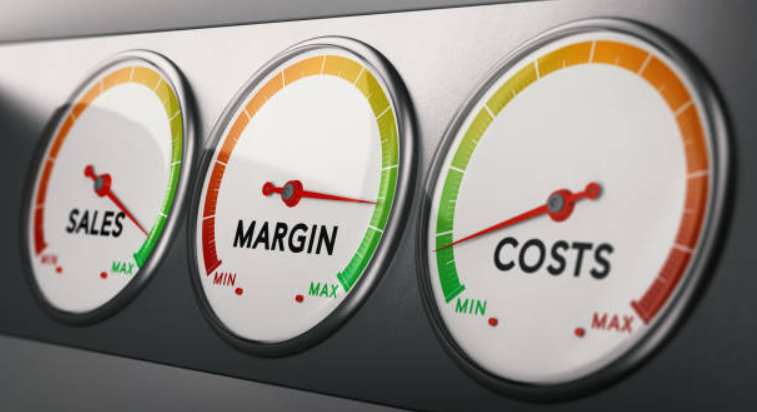
But even with digital help and raised accessibility, there are a lot of essential ideas that one must grasp to become an expert trader. One of these critical ideas is buying power, which enables traders to manage their leverage and trading capacity without taking unwarranted risks.
Defining The Buying Power
Buying power is a fundamental metric that shows the trading potential of a certain investor. Trader X’s buying power, for instance, might be represented by the $10,000 total that they could spend on stocks or other assets during open hours. It’s the total quantity of possible purchases that trader X can make in a specific time frame.
Consequently, buying power is a trader’s prospective capacity to implement trading plans on the open floor. Understanding your buying power is crucial to developing workable trading strategies and realising the full potential of your investing resources.
Difference Between Margin Accounts And Cash Accounts
As previously mentioned, the buying power is the maximum amount that a trader can acquire within a given time frame, which is often one day. Buying power may be as simple as the investor’s free cash deposits in some situations. But the margin trading speciality adds even more intrigue to the buying power idea.
Let’s begin with the fundamentals: what precisely is margin trading? It describes increasing one’s buying power without having the same amount of spare cash to use as an investment. Investors must first open a margin account and fund it with an initial collateral investment. It’s common for ordinary brokerage accounts to provide margin accounts, which makes it simpler for traders to initiate trades on their platform profiles.
Following a screening procedure, investors will be assigned a leverage ratio based on their existing financial situation. Typically, conservative leverage ratios are 2:1, allowing investors to buy twice as many shares as they put in.
As a result, investor X can initiate a trade with a $100,000 value provided they have placed $50,000 as initial money into their account and have a 2:1 leverage ratio. Additionally, investors should have sufficient cash on hand to cover the maintenance margin—the amount invested to maintain the position.
Therefore, margin trading equips low-budget traders with brand-new, thrilling options to pursue their goals. Because of this trading niche, traders may now construct more ambitious and extensive trading strategies because the buying power does not match their immediate cash reserves.
It is essential to remember, nevertheless, that buying power in margin trading does not equate to ownership. Although the securities bought on margin might provide profits for investors, they do not constitute the portfolio’s assets. Instead, they are akin to borrowed money from the brokerage company that has to be paid back on schedule.
If this is not the case, the investor’s whole portfolio in the relevant brokerage account will eventually be seized by a brokerage business. The Securities and Exchange Commission (SEC) has advised investors to exercise caution while using this approach, even if it is entirely lawful. This is because it may be risky for novice traders and, in some instances, even border on unethical.
The Influence Of Buying Power On Trading Strategies
The goal of margin trading as a whole is to provide potential investors with more buying power. As a result, traders may buy stocks and assets considerably over their means, thanks to margin investing. It is important to acknowledge that the buying power obtained through margin accounts is subject to specific conditions.
A trader is essentially borrowing money from a brokerage business when they create a margin account. Traders must, however, swiftly close their positions rather than make the outstanding payment. Trades will not be obligated to the brokers if the stock obtained through margin positions turns out to be profitable—or, conversely, unprofitable in the case of short positions. If the position is unsuccessful, traders must use maintenance margins to make up for the broker’s losses.
Traders will receive a margin call and a stop loss order if their losses exceed the maintenance amount and do not have enough reserves to cover them. In the latter case, all investors’ assets will be seized by the broker business in order to cut losses. Because of this, the buying power of margin trading is precarious and may quickly transform into significant losses. Therefore, it’s important to keep an eye on leverage levels and quickly close off margin positions before they jeopardise your whole trading portfolio on a particular platform.
Calculating The Buying Power
There is a straightforward method that determines exact buying power based on the margin account’s leverage ratio. A trader’s buying power is five times the amount of their margin deposits if they have a 5-to-1 leverage ratio.
Nevertheless, when margin call requirements tighten, rising leverage ratios reduce traders’ safety net. Excessive leverage makes trading positions more risky. Thus, traders need to use caution while developing their tactics.
How To Avoid Margin Calls By Controlling Your Buying Power
To achieve desired positions, one might boost buying power in several methods. The most common practice is to ask the broker for a margin loan. Margin loans are credit advances that use the portfolios of investors as security. Investors should use caution while considering this option, even though they effectively provides additional finance. Like a stop loss order, if you don’t repay these loans, the brokerage company will take complete custody of the assets in your collateral portfolio.
Final Thoughts
In the trading environment, it is essential to comprehend the idea of buying power. Using margin trading and related strategies, investors are released from their immediate financial reserves. Although this increased independence is great news for traders on a tight budget, it comes with drawbacks as well. Having more buying power puts more at stake and introduces serious risks.







